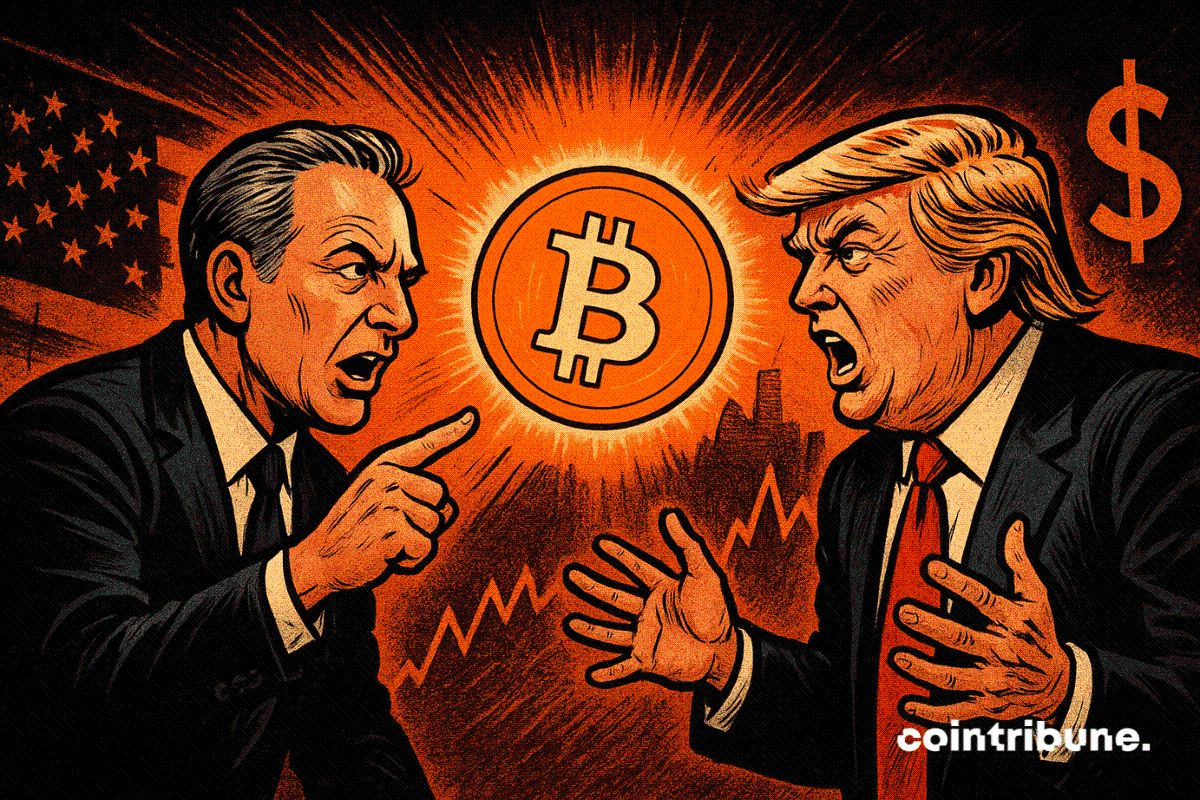Blockchain's New Dawn: U.S. GDP Data Transparency and Market Efficiency
- U.S. Commerce Department stores GDP data hashes on Bitcoin, Ethereum, and Solana blockchains to ensure tamper-proof transparency and real-time access. - Blockchain integration in economic reporting aligns with Trump-era crypto policies, aiming to modernize infrastructure and boost supply chain efficiency by 3.3% Q2 2025 growth. - PwC estimates blockchain could add $1.76T to global GDP by 2030, with U.S. gains from reduced transaction costs (42.6%) and cross-border payment delays (78.3%) via tokenization.
The U.S. Department of Commerce’s decision to publish GDP data on blockchain networks marks a pivotal shift in economic transparency and market efficiency. By storing cryptographic hashes of GDP figures on public blockchains such as Bitcoin , Ethereum , and Solana , the initiative ensures tamper-proof, real-time access to critical economic indicators [1]. This move, announced in late August 2025, aligns with the Trump administration’s broader crypto-friendly policies and reflects a strategic effort to modernize data infrastructure [2]. The first blockchain-published GDP data revealed a 3.3% annualized growth in Q2 2025, underscoring the potential of blockchain to enhance supply chain efficiency and reduce operational costs [3].
Blockchain’s role in financial markets extends beyond data transparency. A 2020 PwC report estimated that blockchain could boost global GDP by $1.76 trillion over the next decade, with the U.S. set to gain $407 billion through improved trust in supply chains, identity management, and cross-border payments [4]. In financial services, blockchain has already demonstrated measurable efficiency gains: one study noted a 42.6% reduction in transaction costs and a 78.3% decrease in cross-border processing times [4]. These improvements are amplified by tokenization, which the 2025 IMF report highlights as a tool to reshape financial systems by reducing friction and enhancing liquidity [5].
The U.S. initiative also signals a paradigm shift in investor behavior. The introduction of blockchain-based exchange-traded products, such as Fidelity’s FBTC ETF, has amplified the reflection effect in behavioral economics, where investors react asymmetrically to gains and losses [6]. These ETFs now influence 85% of Bitcoin’s price leadership, illustrating the growing interplay between blockchain and traditional finance [6]. Furthermore, 71% of crypto investors report that U.S. policies, including blockchain-based GDP reporting, have strengthened their investment cases for digital assets [7].
Critics argue that blockchain does not inherently ensure data accuracy, only security [2]. However, the U.S. model addresses this by combining blockchain with regulatory clarity, as outlined in the Presidential Working Group on Digital Asset Markets’ recommendations [8]. This approach has spurred institutional adoption, with companies like IBM and AWS expanding blockchain offerings to meet surging demand [7].
For investors, the implications are clear: blockchain’s integration into GDP reporting and financial infrastructure is not speculative but foundational. As the U.S. leads this transformation, markets are poised to benefit from enhanced transparency, reduced costs, and a regulatory environment that prioritizes innovation. The next decade may well see blockchain redefine not just economic data, but the very architecture of global finance.
Source:
[1] US Commerce Department will put GDP data on the ...
[2] US Commerce to publish GDP data on blockchain, says ...
[3] Blockchain as a Macroeconomic Catalyst: U.S. GDP ...
[4] Blockchain technologies could boost the global economy ...
[5] Tokenization and Financial Market Inefficiencies in
[6] Navigating Bitcoin ETF Volatility in 2025
[7] Blockchain's New Dawn: How U.S. Commerce Department
[8] Presidential Working Group Issues Report and ...
Disclaimer: The content of this article solely reflects the author's opinion and does not represent the platform in any capacity. This article is not intended to serve as a reference for making investment decisions.
You may also like
Discover How ZKsync Fast-Tracks Blockchain Security
In Brief ZKsync Lite will be retired by 2026, having achieved its goals. ZKsync team plans a structured transition, ensuring asset security. Future focus shifts to ZK Stack and Prividium for broader application.

Bittensor Follows Bitcoin Path With TAO Halving

Mining Sector Falls 1.8 % Despite Bitcoin Rally

Stablecoin Startup Crown Secures $13.5M from Paradigm in a Game-Changing Move